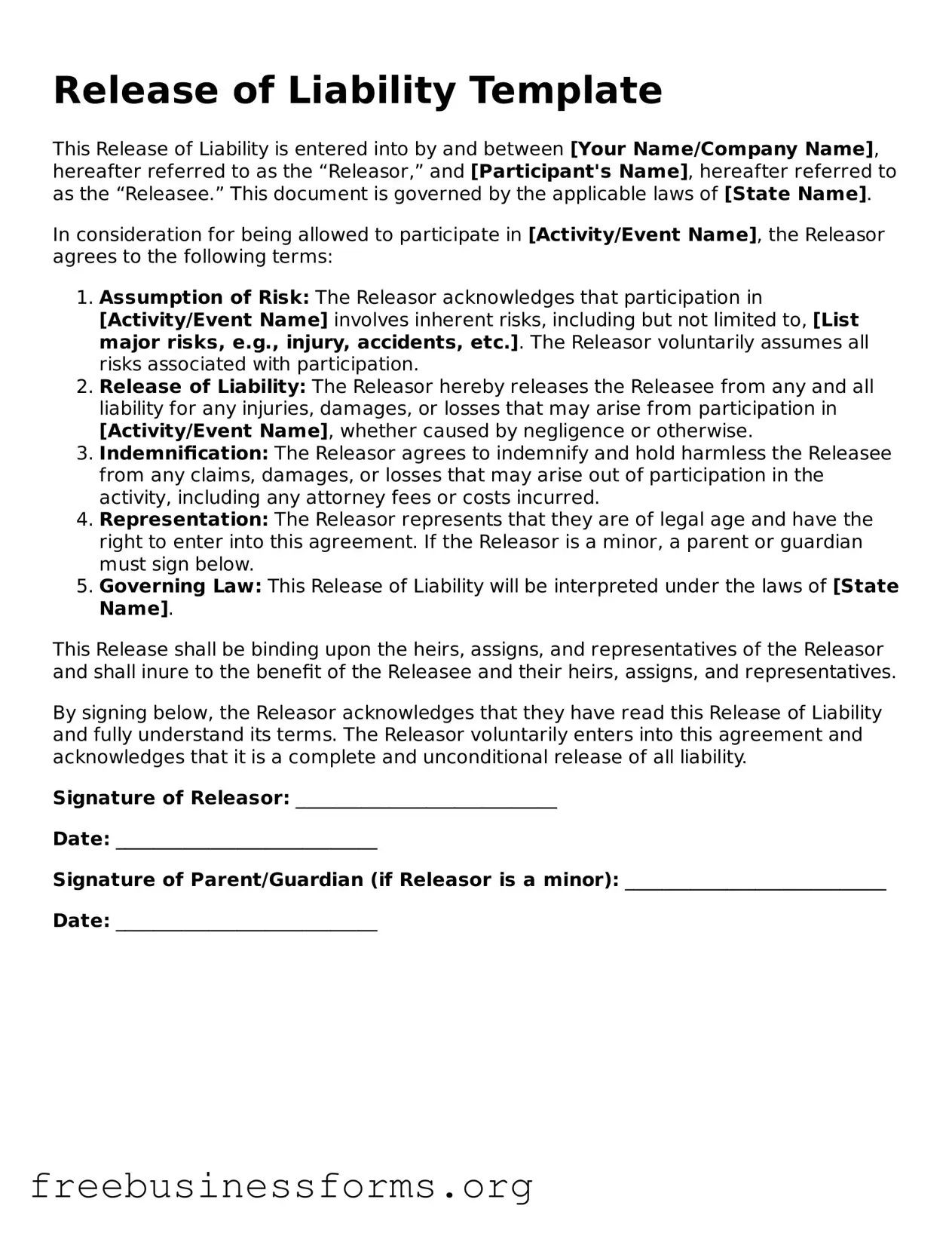Release of Liability Template
This Release of Liability is entered into by and between [Your Name/Company Name], hereafter referred to as the “Releasor,” and [Participant's Name], hereafter referred to as the “Releasee.” This document is governed by the applicable laws of [State Name].
In consideration for being allowed to participate in [Activity/Event Name], the Releasor agrees to the following terms:
- Assumption of Risk: The Releasor acknowledges that participation in [Activity/Event Name] involves inherent risks, including but not limited to, [List major risks, e.g., injury, accidents, etc.]. The Releasor voluntarily assumes all risks associated with participation.
- Release of Liability: The Releasor hereby releases the Releasee from any and all liability for any injuries, damages, or losses that may arise from participation in [Activity/Event Name], whether caused by negligence or otherwise.
- Indemnification: The Releasor agrees to indemnify and hold harmless the Releasee from any claims, damages, or losses that may arise out of participation in the activity, including any attorney fees or costs incurred.
- Representation: The Releasor represents that they are of legal age and have the right to enter into this agreement. If the Releasor is a minor, a parent or guardian must sign below.
- Governing Law: This Release of Liability will be interpreted under the laws of [State Name].
This Release shall be binding upon the heirs, assigns, and representatives of the Releasor and shall inure to the benefit of the Releasee and their heirs, assigns, and representatives.
By signing below, the Releasor acknowledges that they have read this Release of Liability and fully understand its terms. The Releasor voluntarily enters into this agreement and acknowledges that it is a complete and unconditional release of all liability.
Signature of Releasor: ____________________________
Date: ____________________________
Signature of Parent/Guardian (if Releasor is a minor): ____________________________
Date: ____________________________
